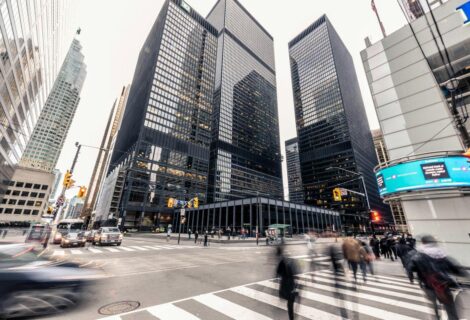AMZA Capital, a specialized lender in commercial real estate financing, plays a crucial role in funding various real estate deals. Understanding the key factors that AMZA Capital considers when evaluating funding opportunities is essential for success in securing financing for commercial real estate projects.
Key Takeaways
- Property value and appraisal are primary considerations for AMZA Capital when funding commercial real estate deals.
- Loan-to-Value Ratio is a key factor in determining the risk level of a commercial real estate deal for AMZA Capital.
- Debt Service Coverage Ratio is crucial for assessing the borrower’s ability to service the loan and impacts funding decisions by AMZA Capital.
- Borrower’s creditworthiness significantly influences the approval and terms of commercial real estate funding from AMZA Capital.
- Having a well-defined exit strategy is essential for AMZA Capital to mitigate risks and ensure a successful investment in commercial real estate deals.
1. Property Value and Appraisal

Understanding the property value and obtaining a professional appraisal is crucial for AMZA Capital when considering funding for commercial real estate deals. The appraisal provides an objective evaluation of the property’s worth, which is essential for determining the loan amount.
- The appraisal assesses various factors, including location, condition, and market trends.
- It helps in identifying any potential issues that may affect the property’s value.
- AMZA Capital relies on this information to ensure the investment is sound.
The value of the property is a cornerstone in the decision-making process, as it affects the risk profile of the loan. A well-supported appraisal mitigates the risk for both the lender and the borrower.
When considering hard money loans, which are an option when traditional banks won’t lend, the property value takes on an even greater significance. AMZA Capital’s approach is to align the loan with the property’s true market value to ensure a fair and secure investment.
2. Loan-to-Value Ratio

The Loan-to-Value (LTV) ratio is a critical metric that AMZA Capital scrutinizes when evaluating funding for commercial real estate deals. This ratio compares the loan amount to the appraised value of the property, providing insight into the level of risk associated with the loan.
A favorable LTV ratio indicates a lower risk for the lender, as it suggests that the property value exceeds the loan amount, offering a buffer in case of default.
Lenders typically prefer lower LTV ratios, which can vary depending on the type of commercial property and its intended use. For instance, a well-located office building might secure a higher LTV than a specialized industrial facility. Below is a simplified example of how LTV ratios might be structured:
| Property Type | Maximum LTV |
|---|---|
| Office | 75% |
| Retail | 70% |
| Industrial | 65% |
Understanding the LTV ratio is essential for borrowers, as it affects the down payment required and the interest rates offered. A strategic approach to managing the LTV can enhance the likelihood of securing favorable financing terms.
3. Debt Service Coverage Ratio

The Debt Service Coverage Ratio (DSCR) is a critical metric that AMZA Capital scrutinizes to assess the cash flow adequacy of a commercial real estate investment. It measures the property’s ability to cover its debt obligations with its net operating income (NOI). A DSCR of less than 1 indicates that the property generates insufficient income to service its debt, which is a red flag for lenders.
A strong DSCR provides a cushion against market fluctuations and tenant vacancies, ensuring that the property can still meet its debt obligations even in less favorable conditions.
Lenders typically look for a DSCR greater than 1.25, with higher ratios demonstrating stronger cash flows. Here’s a simplified example of how DSCR is calculated:
| Net Operating Income (NOI) | Annual Debt Service |
|---|---|
| $150,000 | $100,000 |
In this case, the DSCR would be 1.5 ($150,000 / $100,000), indicating a healthy coverage of debt by the property’s income.
4. Borrower’s Creditworthiness

When assessing a potential borrower’s creditworthiness, AMZA Capital takes a comprehensive look at the individual’s or entity’s financial history and current standing. Credit scores, past loan repayments, and overall financial behavior are scrutinized to determine the likelihood of timely repayments.
Creditworthiness is not just about credit scores; it encompasses a range of financial indicators. Here’s a brief overview:
- Credit Score: A numerical representation of your credit risk.
- Debt-to-Income Ratio: How much debt you carry relative to your income.
- Payment History: Your track record of repaying debts on time.
- Credit Utilization: How much of your available credit you’re using.
Ensuring that the borrower has a solid track record and a responsible financial profile is paramount. A strong credit history suggests a lower risk of default, which is crucial for securing funding.
AMZA Capital’s rigorous evaluation process aims to mitigate risk and ensure that loans are granted to those with a proven record of financial reliability. The borrower’s creditworthiness is a key factor in the decision-making process, as it provides a snapshot of the borrower’s financial health and predicts future behavior.
5. Exit Strategy

An exit strategy is a critical component that AMZA Capital scrutinizes before funding any commercial real estate deal. It outlines the method by which an investor intends to exit the investment and realize profits. An effective exit strategy can significantly influence the decision-making process, as it provides a clear plan for the future and ensures that the investment aligns with AMZA Capital’s risk management protocols.
When evaluating an exit strategy, AMZA Capital considers several factors:
- The anticipated holding period for the property
- The market conditions expected at the time of exit
- The potential for refinancing or selling the property
- The projected cash flow and how it supports the exit
It is essential for borrowers to demonstrate a well-thought-out exit strategy that not only maximizes returns but also minimizes risks. This could involve a range of scenarios, from refinancing to selling the property, or even a combination of strategies to adapt to changing market conditions.
Ultimately, a robust exit strategy should answer the question of ‘What to do with the investment?‘ in a manner that aligns with both the investor’s and AMZA Capital’s objectives. It’s not just about having a plan—it’s about having the right plan for the right situation.
Conclusion
In conclusion, AMZA Capital, a specialized lender in commercial real estate financing, carefully considers these 5 key factors when evaluating and funding your commercial real estate deals. By understanding and meeting these criteria, you can increase your chances of securing the financing you need for your fix and flips, DSCR loans, rentals, rehabs, bridge loans, and commercial real estate development projects. Partnering with AMZA Capital can provide you with the support and expertise necessary to navigate the complexities of commercial real estate financing.
Frequently Asked Questions
What types of commercial real estate loans does AMZA Capital specialize in?
AMZA Capital specializes in commercial real estate loans for fix and flips, DSCR loans, rentals, rehabs, bridge loans, and commercial real estate development projects.
How does AMZA Capital evaluate property value and appraisal for funding commercial real estate deals?
AMZA Capital considers property value and appraisal by conducting thorough assessments and appraisals to determine the market value and potential of the property.
What is the significance of the loan-to-value ratio in securing funding from AMZA Capital?
The loan-to-value ratio is crucial as it indicates the percentage of the property’s value that can be financed, influencing the amount and terms of the loan provided by AMZA Capital.
How does AMZA Capital assess the debt service coverage ratio when evaluating loan applications?
AMZA Capital analyzes the debt service coverage ratio to ensure that the property’s income can sufficiently cover the loan payments, indicating the property’s financial stability and ability to generate income.
What factors does AMZA Capital consider when evaluating a borrower’s creditworthiness for funding commercial real estate deals?
AMZA Capital assesses the borrower’s credit history, financial stability, income sources, and overall financial health to determine their creditworthiness and ability to repay the loan.
Why is having a solid exit strategy important when seeking funding from AMZA Capital?
A well-defined exit strategy is crucial as it demonstrates the borrower’s plan to repay the loan, mitigate risks, and ensure a successful outcome for the commercial real estate investment, aligning with AMZA Capital’s funding criteria.





